It's Tradition So Off We Go! (Page One)
We headed for the show at 9:00 so we could find a parking spot on the beach.... Looking for James and Frankie (wherever the saugages are being served!)

Hey Woody! Del's looks better

Type 2 VW Van
Did You Know? - The first generation of the Volkswagen Type 2 with the split windshield, informally called the Microbus, Splitscreen, or Splittie among modern fans, was produced from 8 March 1950 through the end of the 1967 model year. From 1950 to 1956, the T1 was built in Wolfsburg; from 1956, it was built at the completely new Transporter factory in Hanover.
Like the Beetle, the first Transporters used the 1100 Volkswagen air-cooled engine, an 1,131 cc (69.0 cu in), DIN-rated 18 kW (24 PS; 24 bhp), air-cooled flat-four-cylinder 'boxer' engine mounted in the rear.
This was upgraded to the 1200 – an 1,192 cc (72.7 cu in) 22 kW (30 PS; 30 bhp) in 1953. A higher compression ratio became standard in 1955; while an unusual early version of the 30 kW (41 PS; 40 bhp) engine debuted exclusively on the Type 2 in 1959. This engine proved to be so uncharacteristically troublesome that Volkswagen recalled all 1959 Transporters and replaced the engines with an updated version of the 30 kW engine.

Great colors for fall
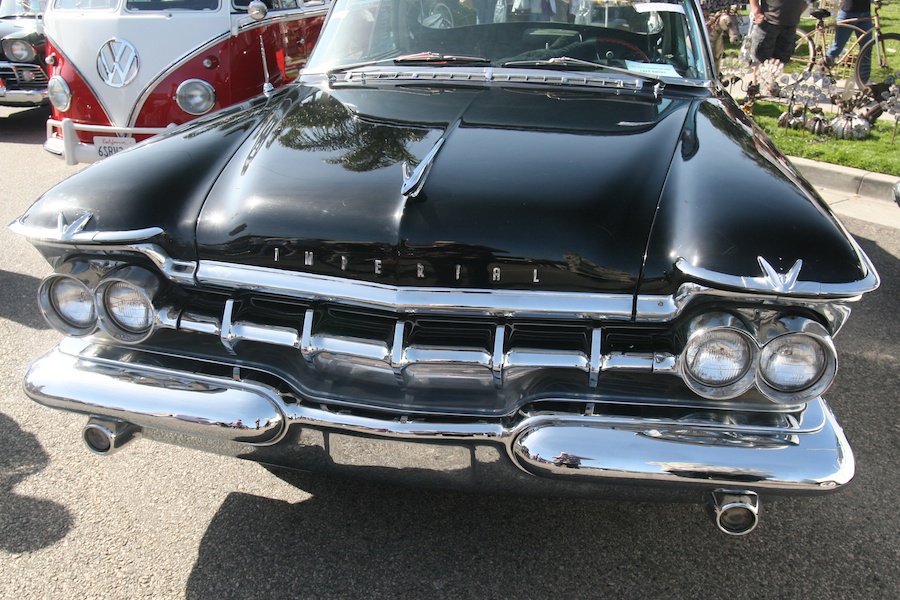
Magnificent vehicle
Did You Know? - The Chrysler Imperial, introduced in 1926, was the company's top of the range vehicle for much of its history. Models were produced with the Chrysler name until 1954, and again from 1990 to 1993. The company tried to position the cars as a prestige marque that would rival Cadillac and Lincoln.
According to a feature article in AACA's magazine The adjective 'imperial' according to Webster's Dictionary means sovereign, supreme, superior or of unusual size or excellence. The word imperial thus justly befits Chrysler's highest priced quality model.
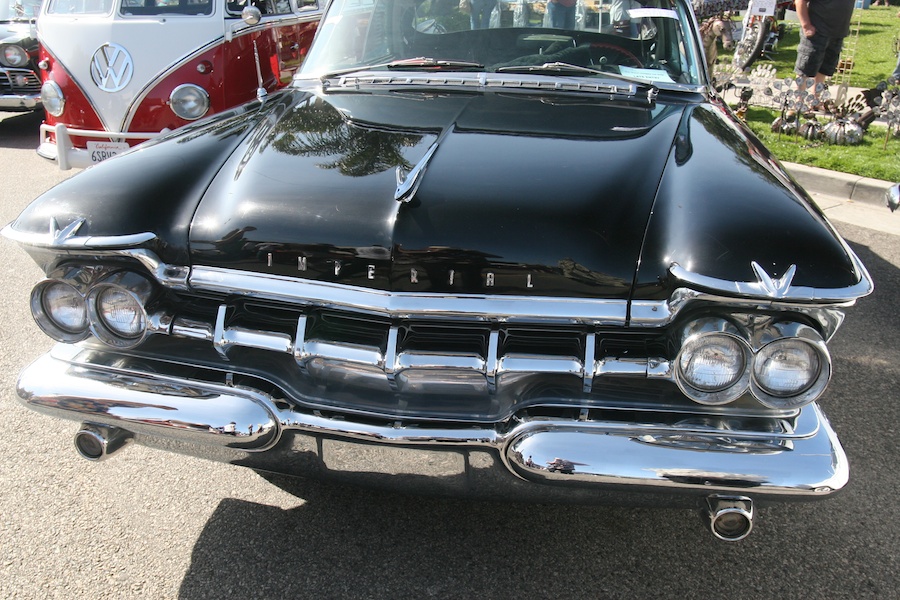
It was it's own make for a while
Did You Know? - In 1955 Chrysler spun off the Imperial as its own separate marque in an attempt to compete directly with the Cadillac and Lincoln luxury marques offered by General Motors and Ford, respectively, rather than the traditional Chrysler competitors Buick and Oldsmobile.
Imperial sales during this period were generally about 10% of the numbers that Cadillac was posting.
Imperial as a marque was always sold in Chrysler dealerships and never in distinct Imperial dealerships (which were never set up), so the nameplate failed to separate itself as its own marque as a consequence. See the separate page Imperial (automobile) for information about Imperial model years 1955–1983.

The trusty chebby

Great restoration

Fibreglass 54
Did You Know? - In 1927 General Motors hired designer Harley Earl who loved sports cars. GIs returning after serving overseas in the years following World War II were bringing home MGs, Jaguars, Alfa Romeos, and the like.
In 1951, Nash Motors began selling an expensive two-seat sports car, the Nash-Healey, that was made in partnership with the Italian designer Pinin Farina and British auto engineer Donald Healey, but there were few moderate-priced models.
Earl convinced GM that they needed to build a two-seat sports car, and with his Special Projects crew began working on the new car, "Project Opel" in late 1951.
The result was the hand-built, EX-122 pre-production Corvette prototype, which was first shown to the public at the 1953 GM Motorama at the Waldorf-Astoria in New York City on January 17, 1953. Production began six months later.
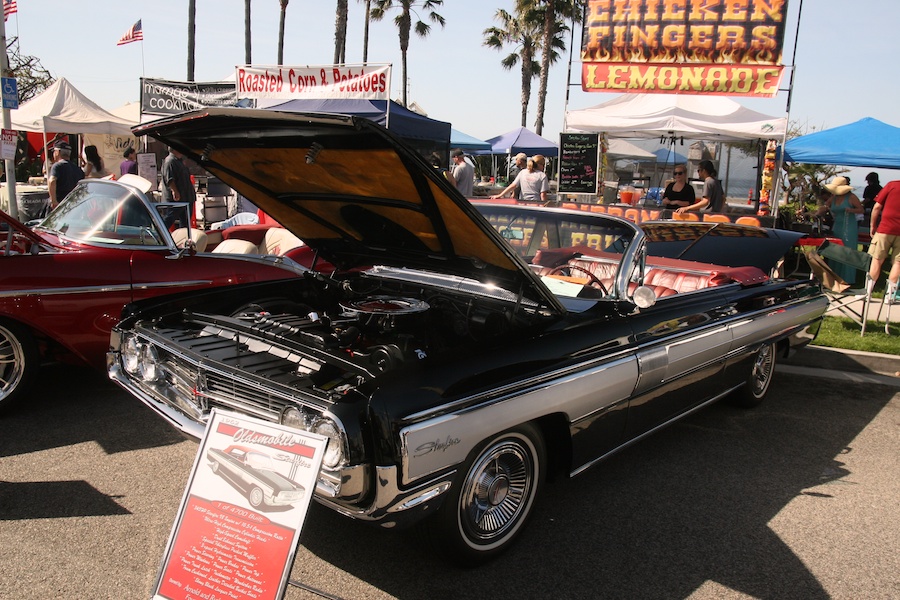
Now this is a car!
Did You Know? - The Starfire name was first used by Oldsmobile on a one-of-a-kind dream car that was shown at the 1953 Motorama auto show. Named after a Lockheed jet fighter plane, namely the F-94, the original Starfire was a 5-passenger convertible that had a fiberglass body, a 200 hp (150 kW) Rocket V8 engine, and a wraparound windshield like that used on the top-of-the-line and limited-production 1953 Fiesta 98 convertible.
The name was then used for the 1954–1956 model years to designate the convertible models of the 98 line in much the same way that the Holiday name was used to designate hardtop body-styles. The 1954–1956 Oldsmobile 98 Starfire convertibles were the most expensive Oldsmobiles offered during those years. During the 1957 model year, all 98 models were referred to as being Starfire 98s. The name was dropped from the 98 series beginning with the 1958 model year.
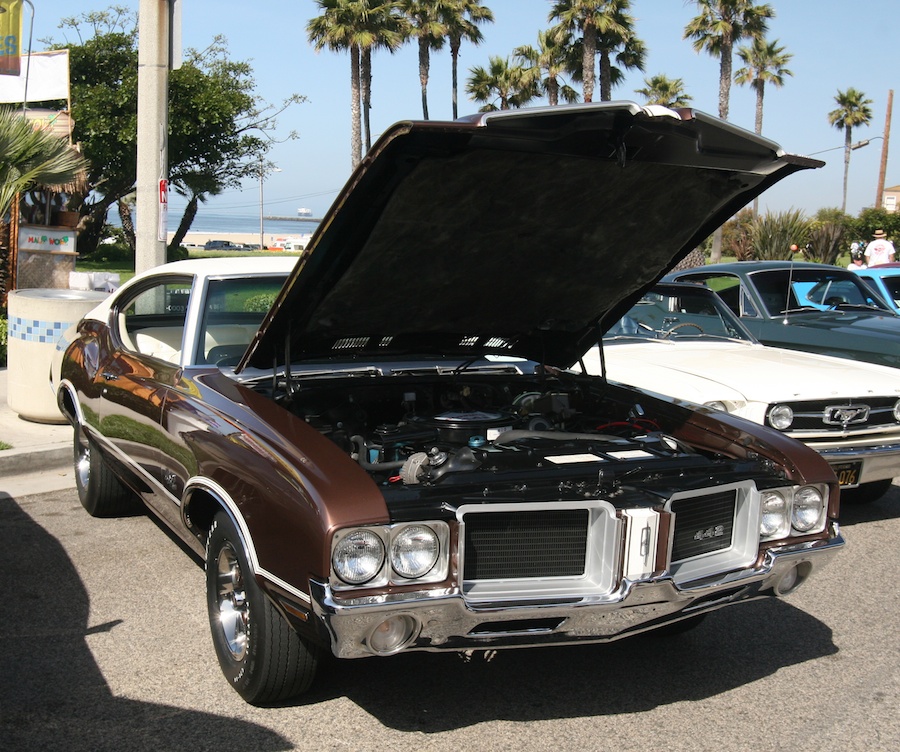
Pure muscle... 442 cubic inches
Did You Know? - The 442 was born out of the competition between Pontiac Division and Oldsmobile. It began as a hasty response to the Pontiac Tempest GTO, which had proved to be an unexpected success midway through the 1964 model year. It was created by performance enthusiast and Oldsmobile engineer John Beltz (also responsible for the Toronado), aided by Dale Smith and Olds Chief Engineer Bob Dorshimer.


Read the license plate


" I love GTO's"

Magnificent detailed work on this chevy


T-Birds all over

"Yep! I'll take one"


Getting a full inspection

OK, what is under the hood?
Did You Know? - Though inspired by, and positioned directly against, the Corvette, Ford billed the Thunderbird as a personal luxury car, putting a greater emphasis on the car's comfort and convenience features rather than its inherent sportiness.
Designations aside, the Thunderbird sold exceptionally well in its first year. In fact, the Thunderbird outsold the Corvette by more than 23-to-one for 1955 with 16,155 Thunderbirds sold against 700 Corvettes.

Turquoise is also OK

Fire Chiefs car....

56 chevy

1960 Cadillac was a mile long at least

Larger garages were needed
Did You Know? - Cadillac is currently the second oldest American automobile manufacturer behind fellow GM marque Buick and is among the oldest automobile brands in the world. Depending on how one chooses to measure, Cadillac is arguably older than Buick. Cadillac was founded in 1902 by Henry Leland, a master mechanic and entrepreneur, who named the company after his ancestor, Antoine Laumet de La Mothe, sieur de Cadillac, the founder of the city of Detroit.
The company's crest is based on a coat of arms that Antoine de la Mothe Cadillac had created at the time of his marriage in Quebec in 1687. General Motors purchased the company in 1909 and within six years, Cadillac had laid the foundation for the modern mass production of automobiles by demonstrating the complete interchangeability of its precision parts while simultaneously establishing itself as America's premier luxury car. Cadillac introduced technological advances, including full electrical systems, the clashless manual transmission and the steel roof.
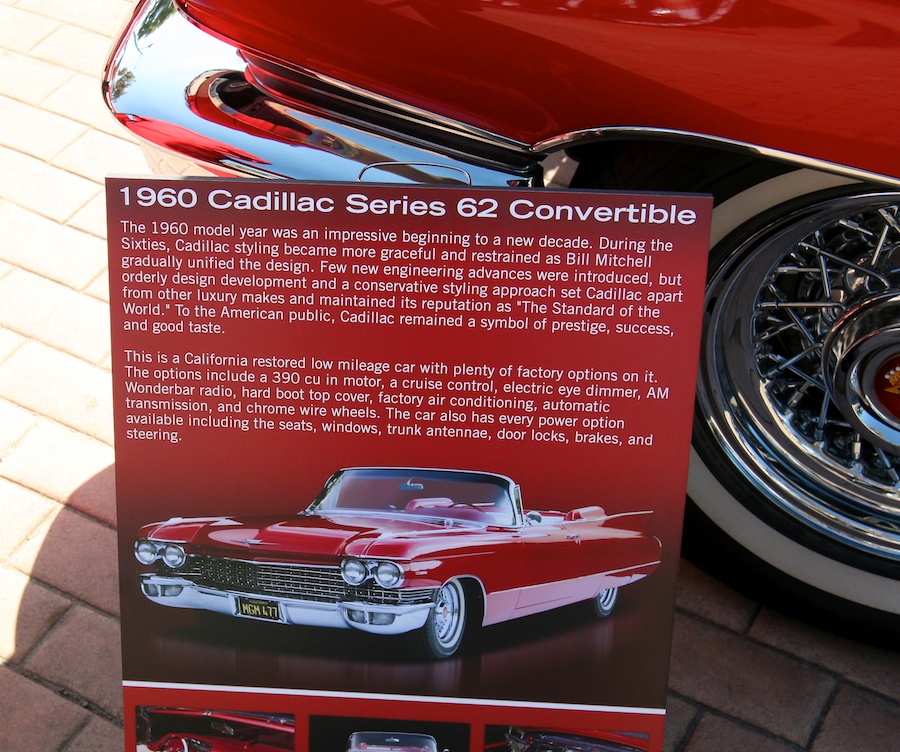

You could put a small chevy inside the engine compartment of this fellow

A work in progress
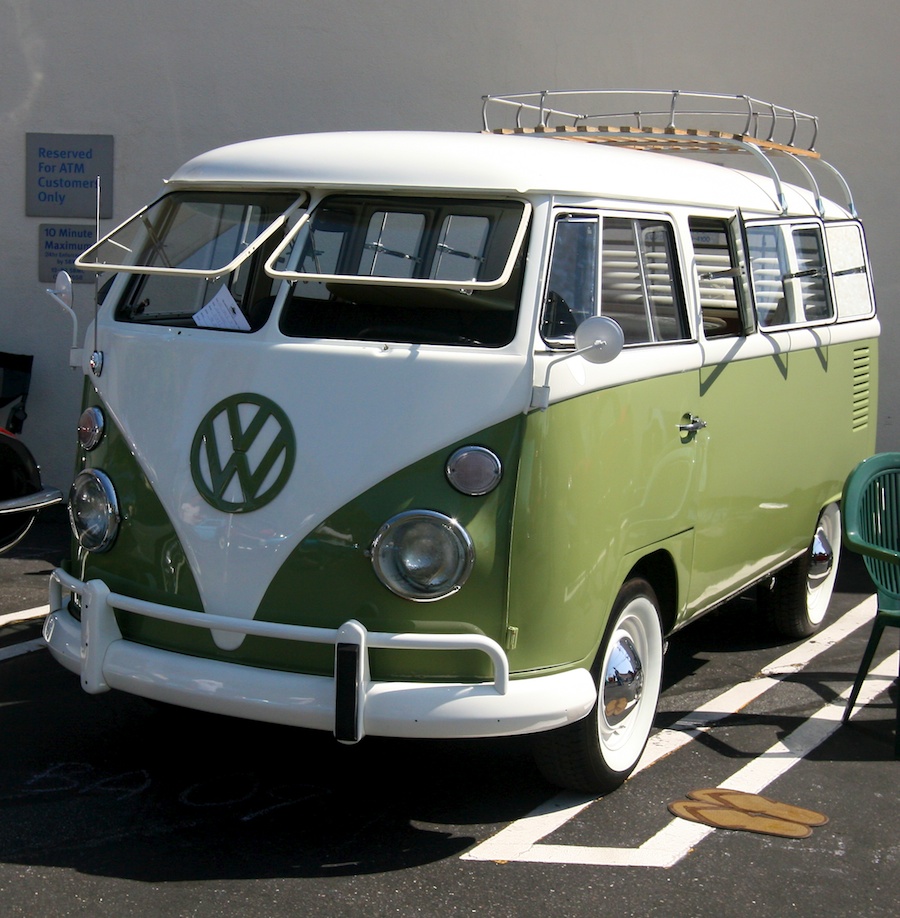
The busses seemed to be popular this year
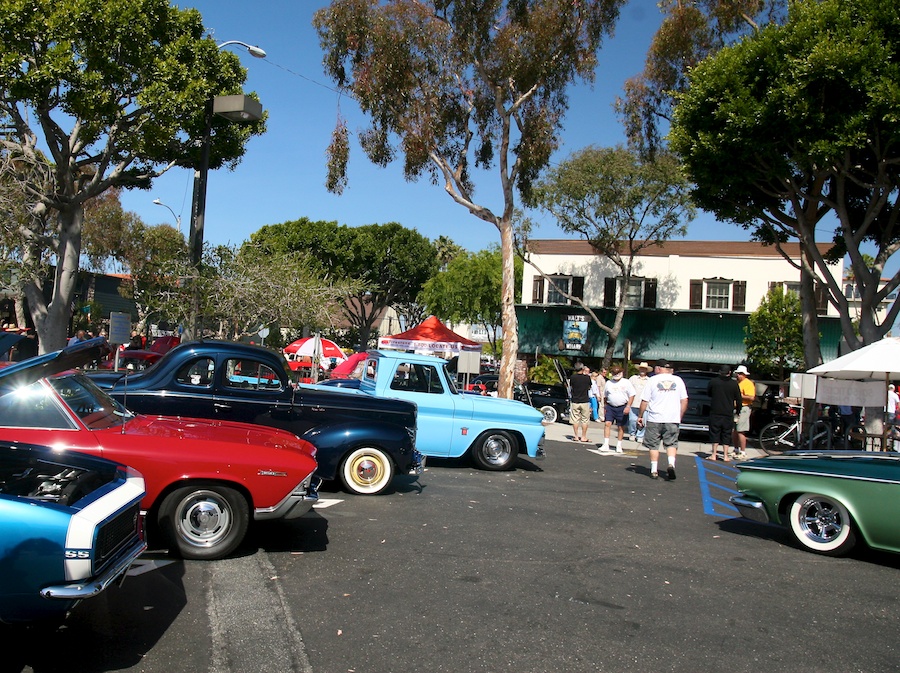
1000's attended tghe show

No door post... Another Chrysler invention
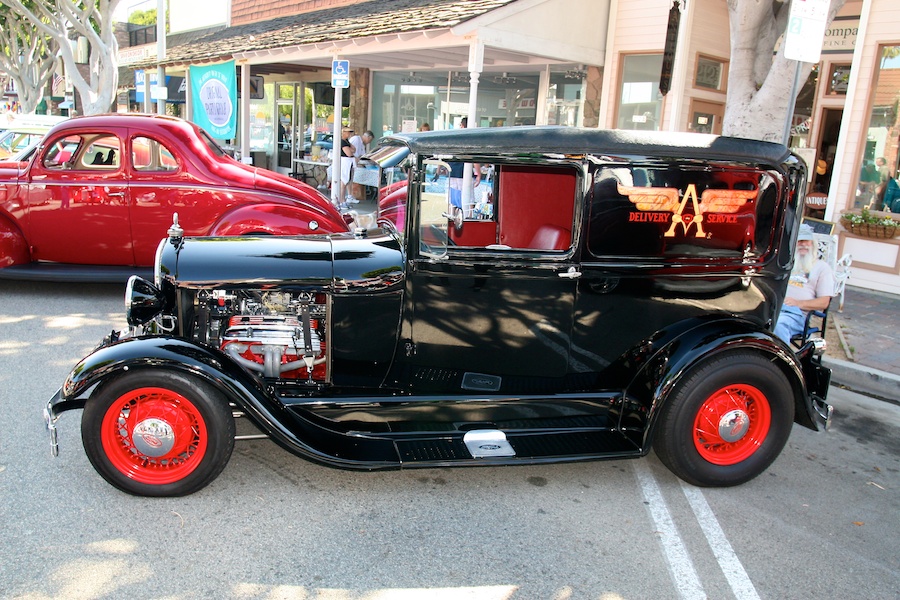
Love the running boards
Did You Know? - A running board is a car or truck accessory part, a narrow step fitted under the side doors of the vehicle. It aids entry, especially into high vehicles. Typical of vintage cars which had much higher ground clearances than today's cars, it is also used as a fashion statement on vehicles that would not require it.[


Nash Metropolitan

Did You Know? - While most U.S. automobile makers were following a "bigger-is-better" philosophy, Nash Motor Company executives were examining the market to offer American buyers an economical transportation alternative.
The Metropolitan was designed in the U.S. and it was patterned from a concept car, the NXI (Nash Experimental International), that was built by Detroit-based independent designer William J. Flajole for Nash-Kelvinator.
It was designed as the second car in a two car family, for Mom taking the kids to school or shopping or for Dad to drive to the railroad station to ride to work: ] the "commuter/shopping car" with resemblance to the big Nash, but the scale was tiny as the Met's wheelbase was shorter than the Volkswagen Beetle's.
Motor Trend praised the car’s economy: their test Metropolitan returned:
- 39.4 mpg-US (5.97 L/100 km; 47.3 mpg-imp) at 45 mph (72 km/h),
- 27.4 mpg-US (8.58 L/100 km; 32.9 mpg-imp) at 60 mph (97 km/h), and
- 30.1 mpg-US (7.81 L/100 km; 36.1 mpg-imp) "in traffic."
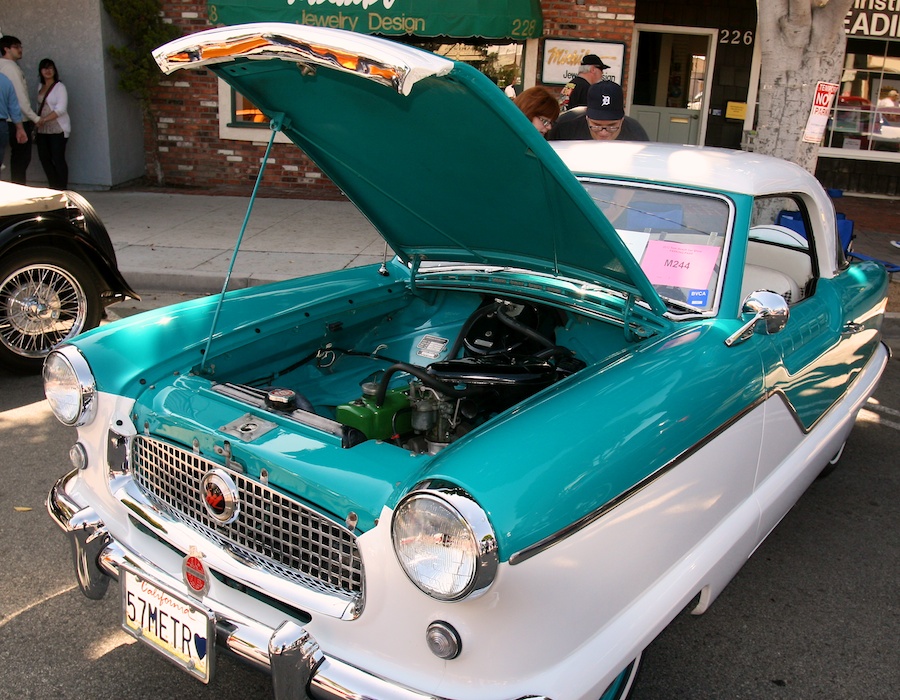
Quite a car for its time

The Studebaker
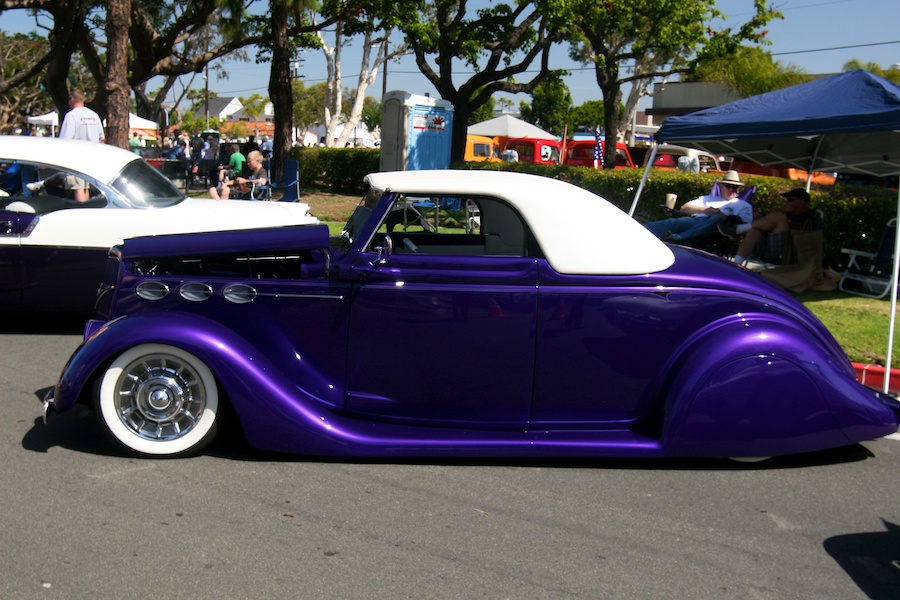
Dragging bottom....
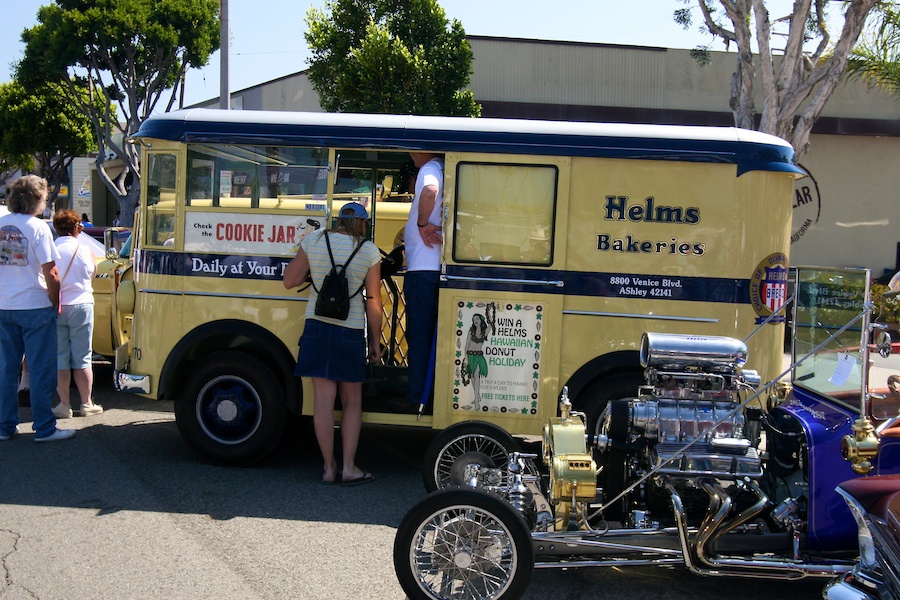
Something smells good
Did You Know? - Despite never being sold in stores, Helms baked products soon became known to millions of consumers. The Helms motto was "Daily at Your Door" and every weekday morning, from both the Culver City facility and a second Helms Bakery site in Montebello, dozens of Helms panel trucks, painted in a unique two-tone scheme, would leave the bakery for various parts of the Los Angeles Basin, some going as far as the eastern San Gabriel Valley.
This is remarkable because the network of freeways had not yet been built, so the trip might take an hour or more. Each truck would travel through its assigned neighborhoods, with the driver periodically pulling (twice) on a large handle which sounded a distinctive whistle or stop at a house where a Helms sign was displayed.

We got a demonstration of the "tooter"
Did You Know? - Helms trucks were manufactured by Divco, an example of which may be found at the Peterson Automotive Museum in Los Angeles. Helms' Divco trucks were powered by various engines, including motors purchased from Nash and Studebaker.



Just like it was 60 years ago
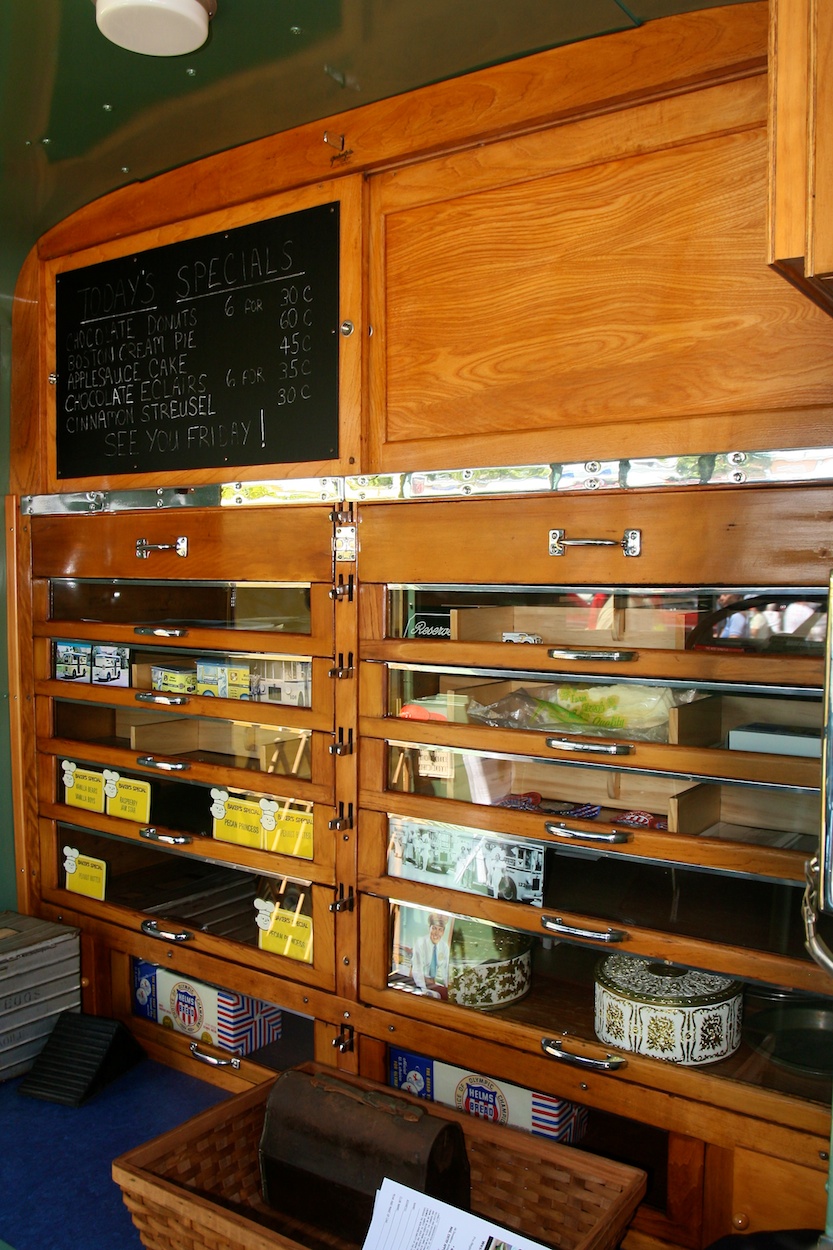
Slide out the drawers and make a selection
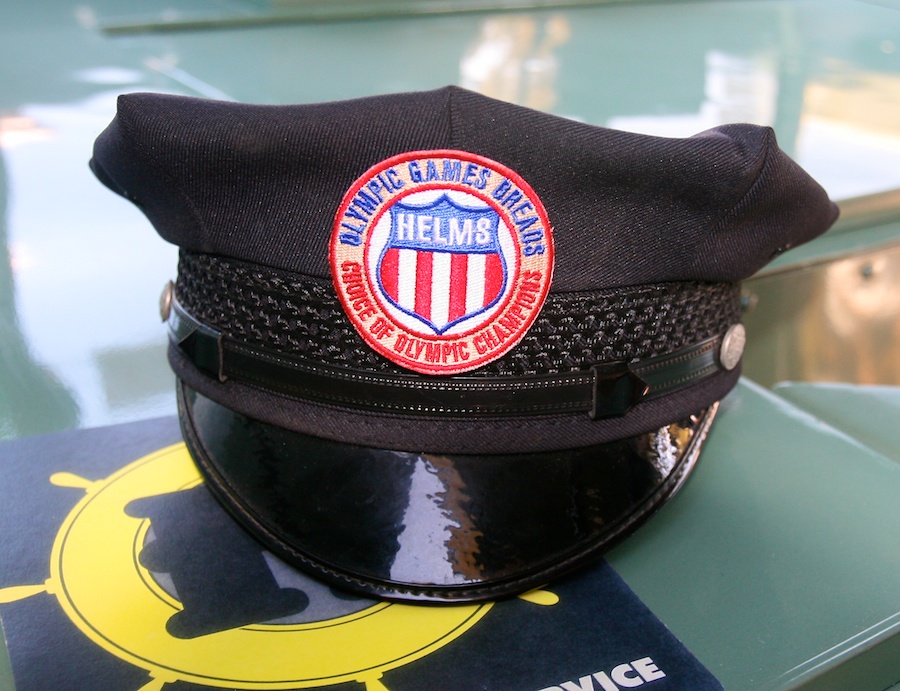
Always in uniform


Modified designs were everywhere

Patriotic truck
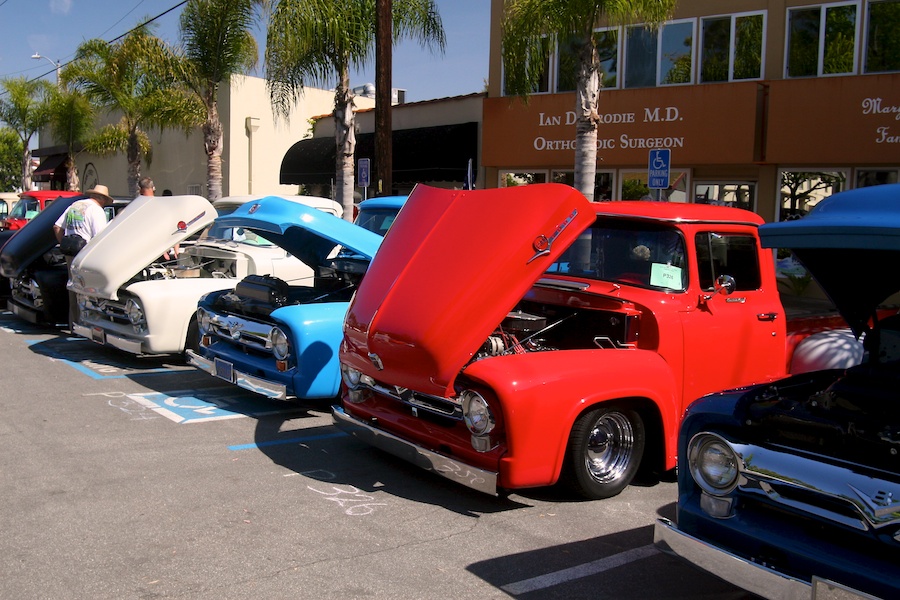
An entire row of pickup trucks
Did You Know? - The first factory-assembled pickup was based on the Ford Model T car, with a modified rear body. It debuted in 1925 and sold for US$281. Henry Ford billed it as the "Ford Model T Runabout with Pickup Body." The 34,000 built that first year featured a cargo box, adjustable tailgate, four stake pockets and heavy-duty rear springs.

Checkout the reflections of the wood panels
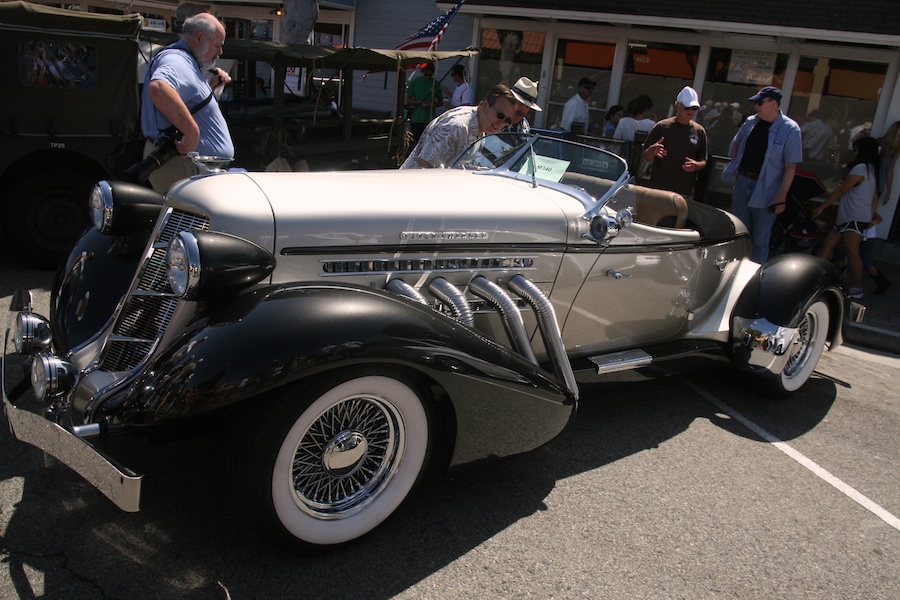
Wow!

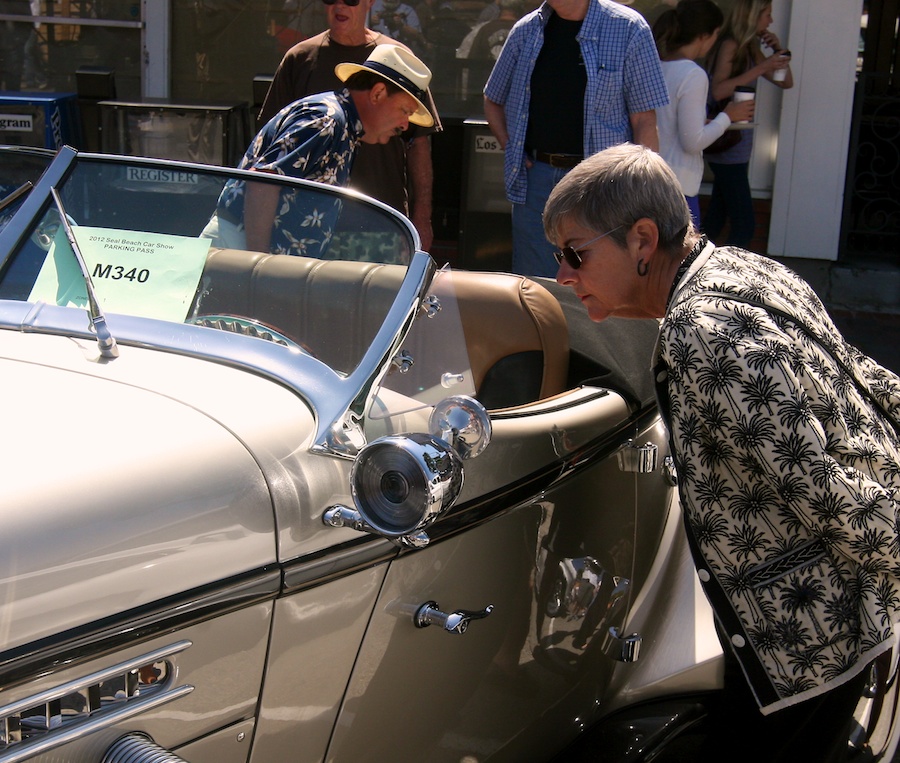
"Yup! This will do just fine"

The Jeep is nearby somewhere

1942 totally restored
Did You Know? - The Willys MB US Army Jeep (formally the Truck, 1/4 ton, 4x4) and the Ford GPW were manufactured from 1941 to 1945. These small four-wheel drive utility vehicles are considered the iconic World War II Jeep, and inspired many similar light utility vehicles. Over the years, the World War II Jeep later evolved into the "CJ" civilian Jeep.
They produced 640,000 Jeeps in WWII.

Simply a classic

Suicide doors
Did You Know? - Suicide doors were not uncommon on cars manufactured in the first half of the 20th century] They were especially popular in the gangster era of the 1930s – supposedly because "It's a lot easier to shove somebody out with the wind holding the door open", as Dave Brownell, the former editor of Hemmings Motor News stated.
After World War II, this design was applied almost exclusively for the rear doors of four-door sedans, if it was used at all. The best-known use of suicide doors on post-World War II automobiles was the Lincoln Continental sedan from 1961 through 1969,[3] and on the unique Lincoln Continental four-door convertible from 1961 through 1967
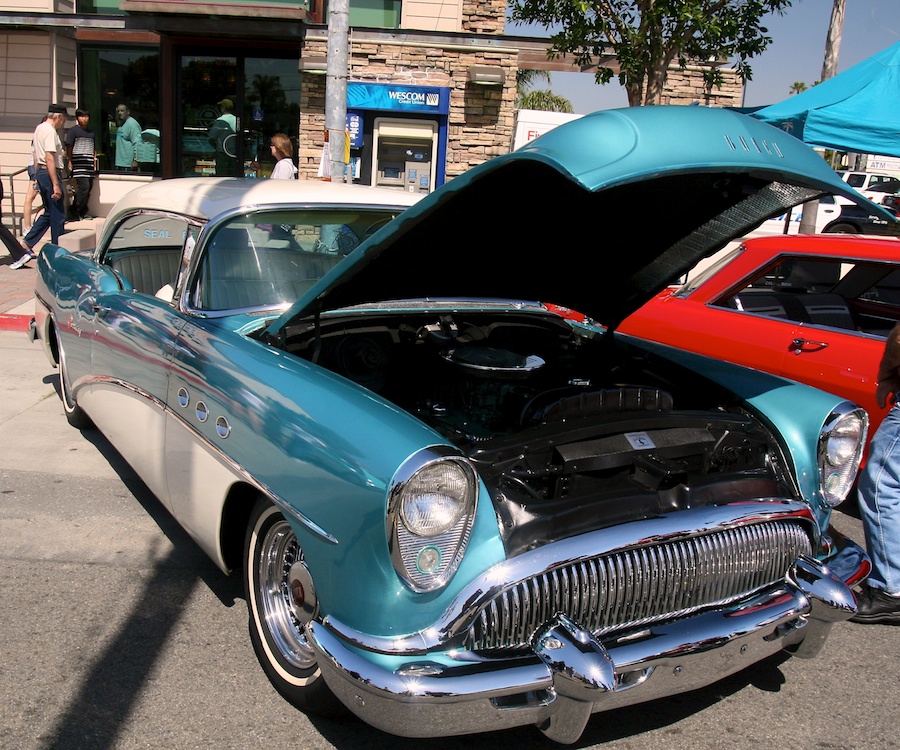
1954 Buick Century


Love the fuzzy dice
Did You Know? - The practice of fuzzy dice originated in the U.S. in the 1950s and is considered one of the first items sold specifically to be hung from a rear-view mirror. The exact meaning and origin of fuzzy dice is unclear, but one theory holds that U.S. pilots in World War II used dice in their cockpits for good luck, and they continued the practice when they came home from the war.
While fuzzy dice were at the height of their popularity in the 1970s and the 1980s, they have since become increasingly rare. The practice of hanging any object from the rear-view mirror is prohibited in at least one state (Minnesota).[2] A 1993 study showed there to be no correlation between the use of fuzzy dice and the degree of a driver's reckless driving behavior.
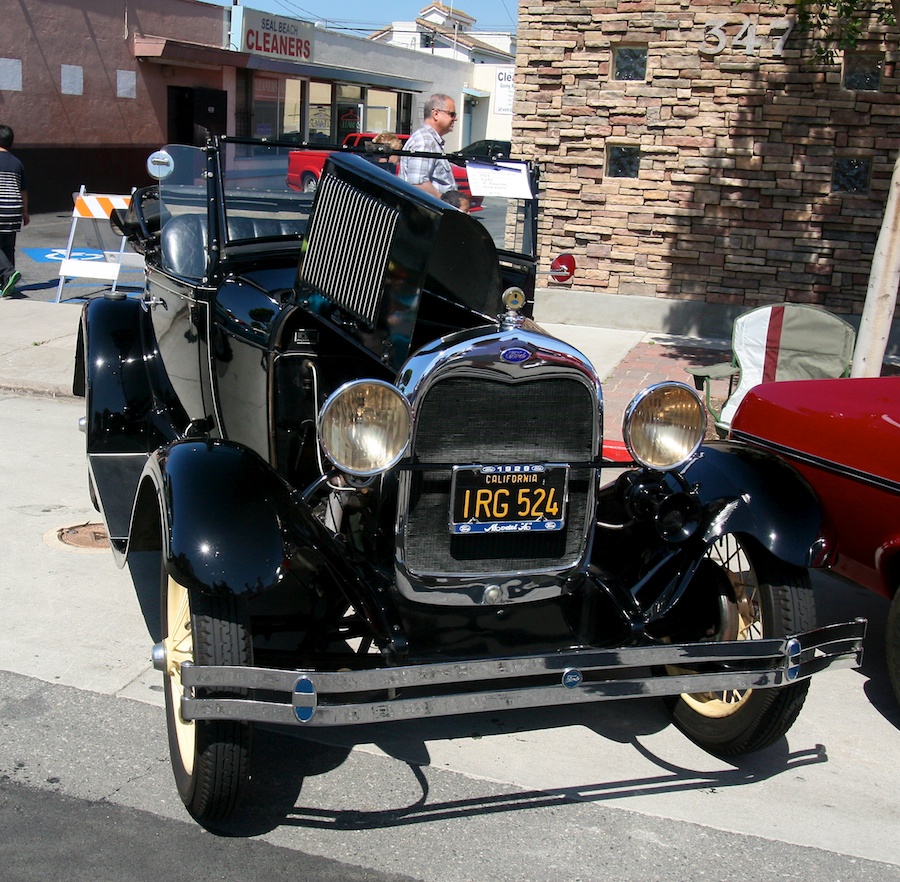
Beautiful machine

So big an engine the hood had to be modified

Before "Green" was popular
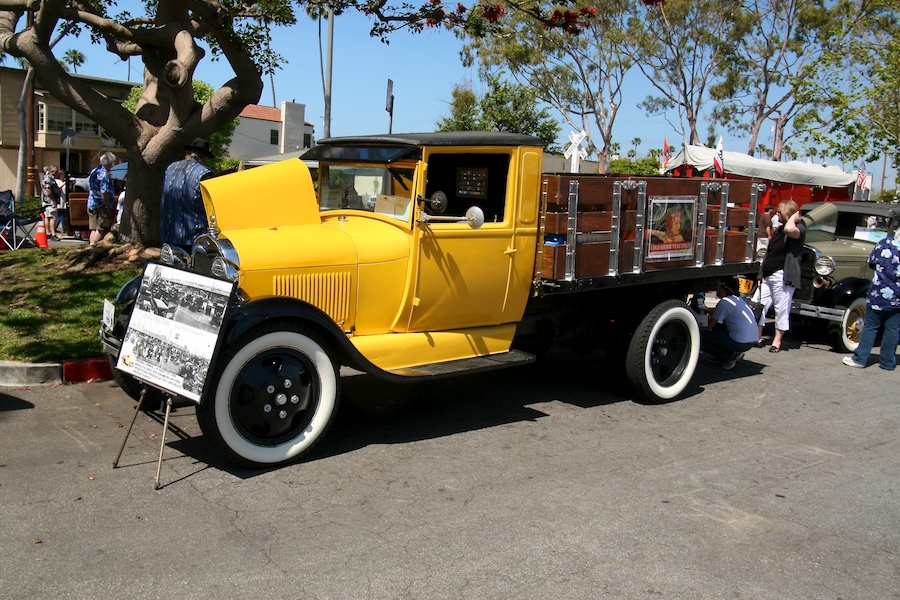
Magnificent restoration

Buick Roadmaster
Did You Know? - The Roadmaster was an automobile built by the Buick division of General Motors. Roadmasters produced between 1936 and 1958 were built on Buick's longest non-limousine wheelbase and shared their basic structure with entry-level Cadillac and, after 1940, senior Oldsmobiles. Between 1946 and 1957 the Roadmaster was Buick's top of the line model. Buick again applied the Roadmaster name to its full-size rear-wheel drive models between 1991 and 1996.
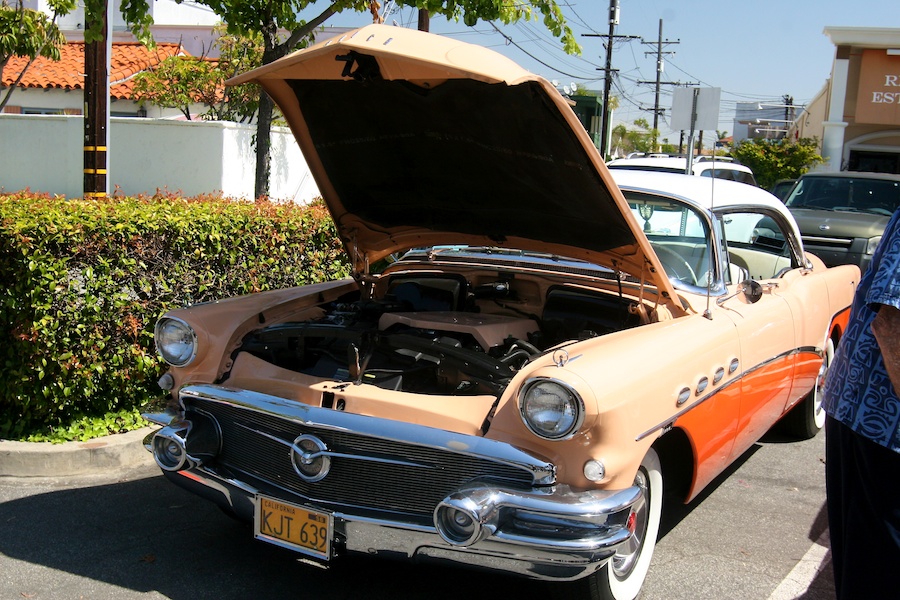

Remember the Red Car line?